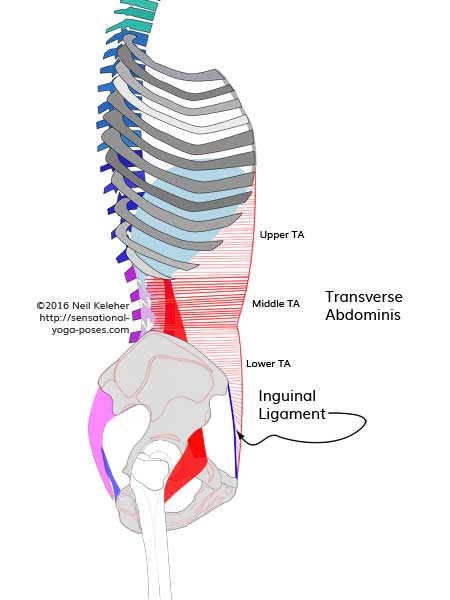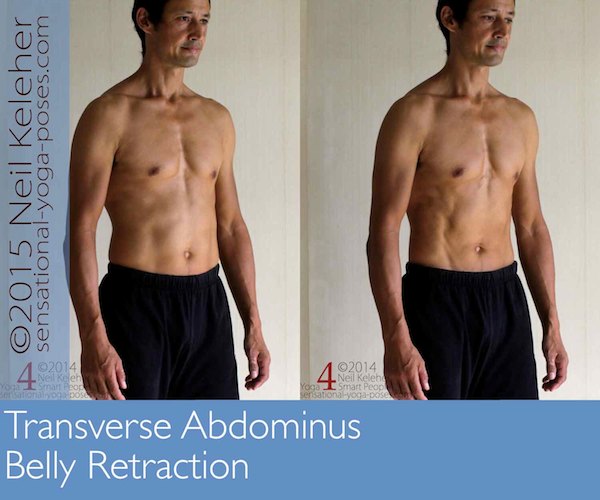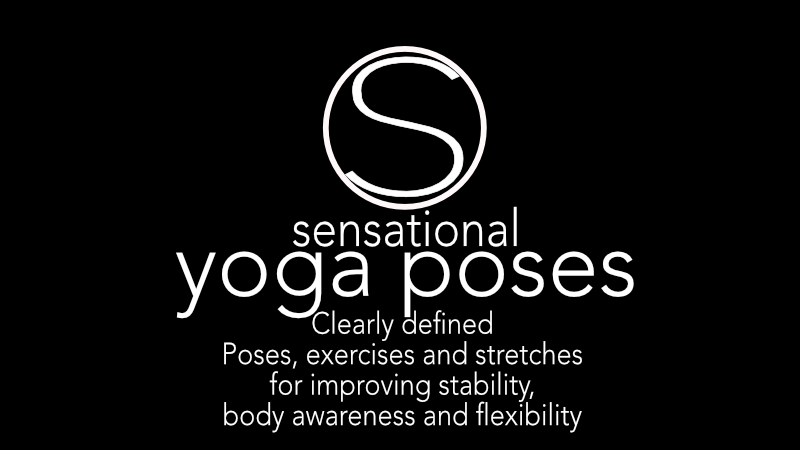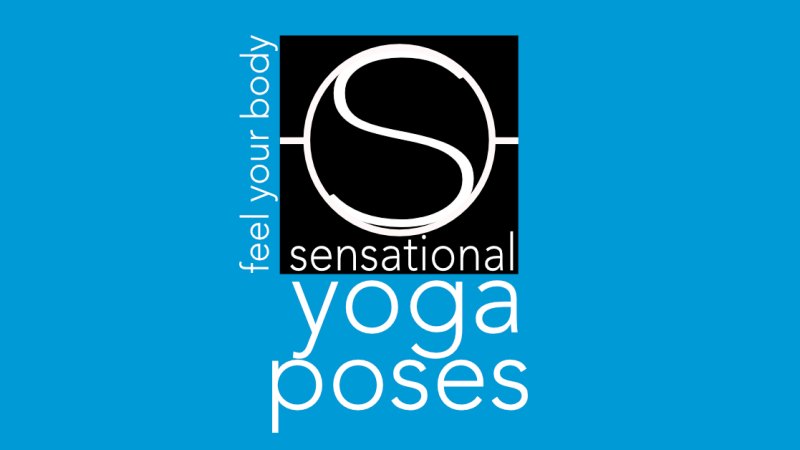Transverse abdominis Exercises
Isolating the three bands of the transverse abdominis so that you can integrate them
The transverse abdominis is a belt like muscle that passes around the waist, but also covers the front opening of the pelvic bowl and the front opening of the lower ribcage.
Together these three bands can help to stabilize the lower ribcage, the thoracolumbar junction and the SI joints.
It can help to train them in isolation so that they can be used more effectively together. Hence the simple transverse abdominis exercises covered on this page.
Transverse Abdominis, Index
The transverse abdominis can be divided into three bands.
The middle band of the Transverse Abdominis (TA) could be thought of as a belt like (or cumberbund-like) muscle that runs horizontally around the waist between the ribcage and the pelvis.
The lower band of this muscle runs across the front of the pelvis, sealing, if you like, the front opening.
The upper band runs across the front of the bottom half of the ribcage, walling up the front of the costal arch.
The lower part can be used to help stabilize the sacro-iliac joint and lumbo-sacral joint. The upper part can be used to help stabilize the thoraco-lumbar joint. The middle portion passes behind the quadratus lumborum and may add tension to it.
Working together, all three can be used to stabilize the lumbar spine, sacrum and their end points.
The upper most band of the transverse abdominis attaches to the inside surface of the lower ribs with fibers interdigitating (interlocking) with those of the respiratory diaphragm.
At the back of the ribcage this band of the transverse abdominis may be opposed (or complemented) by the serratus posterior inferior muscle which attaches from the lowest four ribs to attach to the lowest two thoracic vertebrae and upper 1 or 2 lumbar vertebrae.
The middle band of the transverse abdominis fills the space between the ribcage and the pelvis. It attaches, via the thoraco-lumbar fascia to the lumbar vertebrae.
This portion of the transverse abdominis passes behind the quadratus femoris, which attaches from the pelvis to the lumbar vertebrae and the lowest (12th) pair of ribs. It may add tension to the quadratus lumborum when engaged.
The lowermost band of the transverse attaches to the front of the pelvis at the ASICs (the front "points" of the hip crest) and to the inguinal ligaments, visible as the lines that separate our thighs from our bellies.
Since the two hip bones hinge at the si joints and the pubic bone, this portion of the transverse abdominis can be used in part to oppose the pelvic floor muscles, helping to stabilize the SI joints. In the process it also adds tension to the thoracolumbar composite (TLC), the mass of fused connective tissue at the back of the sacrum which is formed from the aponeurosis erector spinae, the back wall of the paraspinalis rectinancular sheath, and fibers from the aponeurosis of the latissimus dorsai.
The lumbar multifidii, which extend into the region at the back of the sacrum, attach, in part, to the front surface of the aponeurosis erector spinae.
And so when tension is added to the TLC via activation of the lower transverse abdominis, these lumbar multifidii have a stable foundation from which to act on the back of the sacrum and lumbar spine.
As a result, the transverse abdominis can be used in combination with either the pelvic floor muscles or the multifidii to help stabilize the SI Joints.
For more on the thoracolumbar composite, you can read this article on the thoracolumbar fascia of which the thoracolumbar composite and the transverse abdominis is a part.
All together the three bands of the transverse abdominis can have an affect on sacroiliac, sacro-lumbar, lumbar and lumbo-thoracic stability.
So then, how do you exercise the transverse abdominis?
The upper and lower layers attach to the fronts of the ribs and pelvis respectively.
- For the upper layer you can practice drawing the ribs on either side of the costal arch towards each other.
- For the lower layer you can practice drawing the ASICs (and the inguinal ligaments) inwards, towards each other.
- For the middle layer, if you draw a vertical line upwards from each ASIC to the ribcage, pull these two lines inwards, towards each other.
- When activating the lower layer you should notice a pulling inwards or flattening of the lower belly.
- For the upper layer you should notice a similar flattening of the upper abdomen.
- For the middle layer you may notice a feeling of tension at the sides of the waist.
Once you've learned to activate each of these three bands a simple transverse abdominis exercise is to activate them sequentially, lower, middle upper, or upper, middle lower. You may find that activation of these naturally causes an exhale. Relaxing them then should allow an inhale.
A variation of this transverse abdominis exercise is to activate all three bands, keep them active and then inhale. Relax them as you exhale.
Note that the feeling of activating the rectus abdominis is more like trying to squeeze the sternum towards the pubic bone while resisting them moving towards each other at the same time.
Transverse abdominis activation should feel different.
Since the transverse abdominis directly or indirectly attaches to or affects all parts of the lumbar spine, you may also be able to exercise the transverse abdominis by trying to make the lumbar spine (and sacrum) feel straight and strong.
It's similar to the feeling of giving someone the middle finger but with an extra solid middle finger. Try to create that same feeling of tension when straightening the lumbar spine. Try to create that same feeling in the sacrum also.
A method for indirectly activating the lower band of the transverse abdominis is to engage the pelvic floor muscles. This could be thought of as mula bandha and uddayana bandha.
Pelvic floor muscles, include:
- pubococygeus (from tailbone to pubic bone),
- coccygeus (from tailbone to ischial tuberosities),
- iliococcygeus (from tailbone to the inner surface of the ischiopuboramus),
- levator ani (loops from pubic bone to anus)
- levator vaginae/prostatae (loops from pubic bone to just in front of anus),
Activating these muscles causes the ischial tuberosities to draw inwards as well as the bottom tip of the sacrum to move forwards.
The lower transverse abdominis automatically resists this inwards pull by pulling inwards on the ASICs and inguinal ligament. Thus the sacroiliac joint, lumbo-sacral joint and pelvis as a whole is stabilized.
This action then may go well with making the sacrum and lumbar spine as a unit feel long and strong.
Generally any long term holding of any muscle is bad. Muscles are designed to activate and relax. And so to that end rather than trying to keep transverse abdominis activated, practice activating it and relaxing it when exercising it.
In particular it may be helpful to practice activating it in the context of other exercises, say lower back strengthening exercises.
In terms of yoga poses, it may be helpful to activate the transverse abdominis in twisting exercises. Or if you like, think of twisting as a potential exercise for the transverse abdominis.
Also any poses where the legs are supporting the body but the torso is bend sideways or reaching sideways without the support of the arms.
For more ways to exercise the transverse abdominis, particularly in the context of various yoga poses, see the Transverse Abdominis Training page.
For more on the Transverse Abdominis in general, read Transverse Abdominis, Tension Control for your Abs.
Published: 2017 02 18
Updated: 2019 08 26




